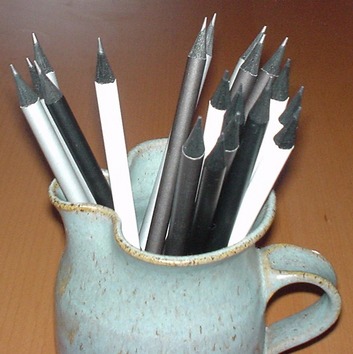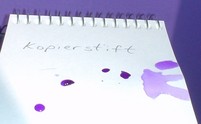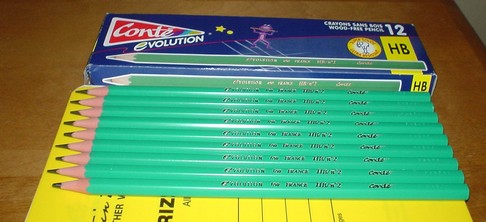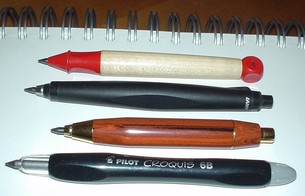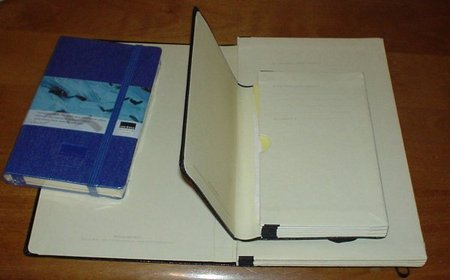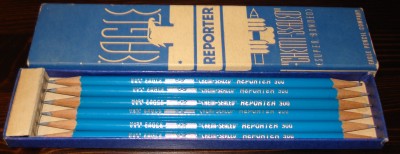
The Eagle Reporter is a pencil aimed at professional stenographers and reporters. Though the Reporter is no longer made, the tradition continues with modern pencils like the Faber-Castell 9008, a round version of the 9000 aimed at stenographers.
The pencils are a shiny aqua-blue and are marked:”Made in U.S.A. Eagle “Chemi-Sealed” Reporter 300″.
The box has a four paragraph writeup on the pencils, which begins “Stenographers and Reporters have long approved the thin diameter and special lead of these superb pencils.” Two Eagle pencil patents are mentioned.
Apart from artists and carpenters, do any other professions today have pencils made for them? I can’t think of any. There are special pencils for marking film, x-rays and other surfaces, but they’re not graphite writing pencils.
Let’s get to a distinguishing feature: They were sold pre-sharpened at both ends. A very practical response to the need to sharpen the point, that I haven’t seen elsewhere. It does make the pencil quite pocket-unfriendly though. Only slightly less obvious is how thin these pencils are. Vintage woodcase pencils are generally thicker than modern pencils, but these are the opposite. The leads appear greyer than any modern graphite core – more about this later.
As a writer, the pencil puts down a nice dark line which seems unexpected from the delicate looking pencil. The core does seem very strong and can take all the pressure I would want to give a pencil.
The patents seemed like an interesting aspect of the pencil. Luckily, I’ve found that the U.S. patent office is online and searchable.
I looked them up and was delighted – they’re not written in legal gibberish, are quite readable and brief, and have some excellent drawings.
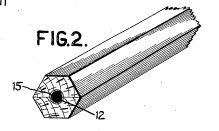
The first patent is 1,854,905, Pencil and Method of Making Pencils by Charles Kaiser, Sr., filed November 25, 1929. The essential idea is strengthening the pencil casing by varnishing the pencil slats with copal. I had never previously heard of copal. It is a tree resin with a significant cultural history. There is an interesting paper on copal here. The terminology is different than today – a pencil casing is called a “sheath”, and a slat is called a “blank”.
The second patent is 1,892,508, Lead Pencil and Method of Making the Same by Narciso Gonzalez, filed March 27, 1931. The patent mentions that pencil leads typically contain tallow or stearic acid, and are thus greasy. This in turn intereferes with glue used to bind the lead to the pencil case. The problem is solved by first dipping the lead in sulphuric acid, washing it with water, then a second exposure is given, this time to diluted sulphuric acid, while a salt solution is applied. The glue then has a much easier time bonding to the lead.
Tallow being a pencil lead ingredient is news to me. I have no idea how widespread these techniques were in the industry when the Reporter was on the market, or if they’re still around today, but these patents demonstrate some of the research that has gone into making these everyday items so functional.

